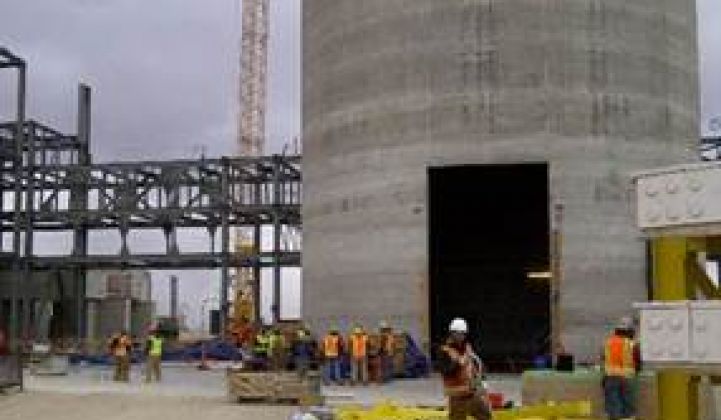SolarReserve’s Crescent Dunes concentrating solar power (CSP) tower is set to be the tallest in the world at 640 feet. It's still under construction.
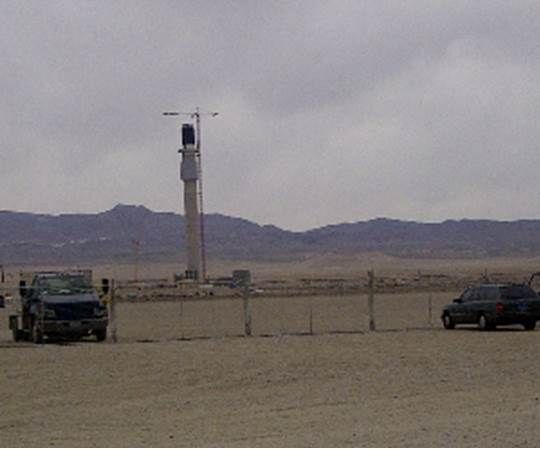
Near the tower, workers were securing equipment inside the half-built steel hot molten salts tank and the skeletal cold salts tank.
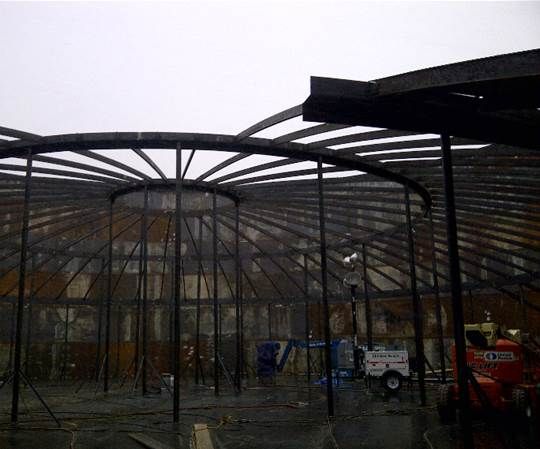
Between the tower and the rising tanks, house-sized concrete blocks and a battery of electrical boxes stood as placeholders for pipe works, a heat exchanging system and a power unit.

A single prototype 34-foot-by-37-foot, three-ton flat mirror lay horizontally atop its post, ready for hard winds.
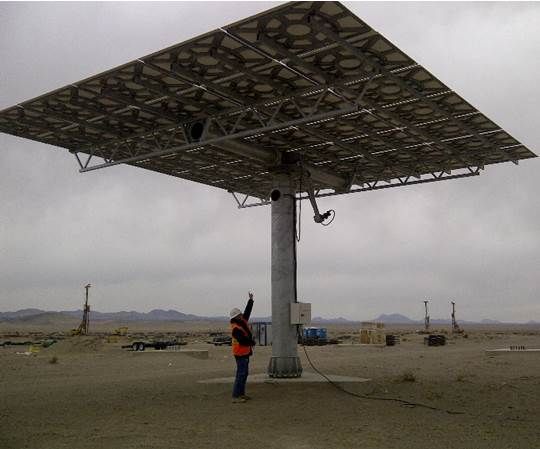
Beside it, a second concrete pedestal stood waiting for the next of the 10,300 heliostats that will eventually be installed.
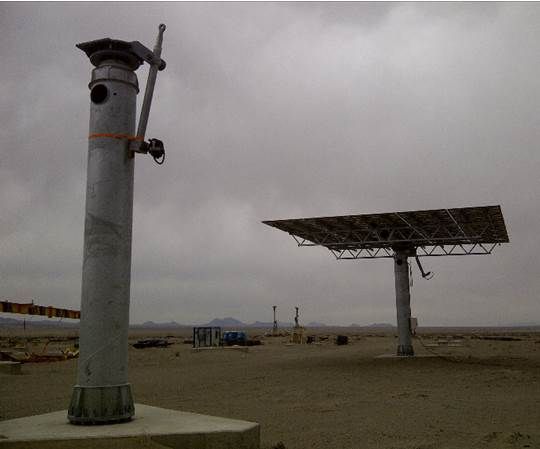
A hint of the tower’s stature could be seen from how tiny that one heliostat looked on the distant desert floor below, surrounded by a forest of triangular concrete pedestal foundations.
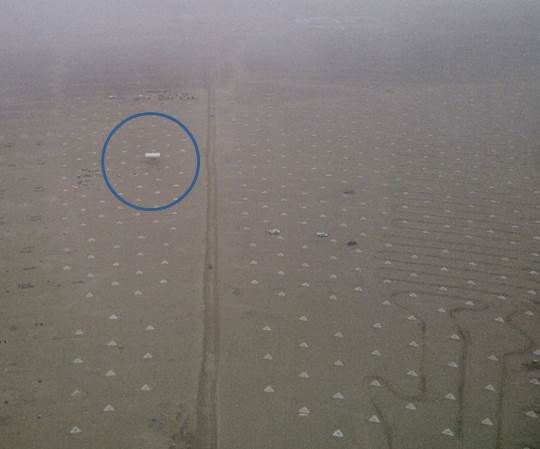
“The tower’s foundation has 900,000 pounds of steel reinforcing rods and 4,800 cubic yards of concrete and the tower has 800,000 pounds of rebar and 4,300 cubic yards of concrete,” said Crescent Dunes Site Manager Brian Painter.
A total of 70 million pounds of molten salts at 550 degrees Fahrenheit, he explained, will flow over a daytime run from the cold tank to the top of the tower where it will achieve a temperature of 1050 degrees F and either flow through the heat exchanger to turn the holding tank’s water into steam to generate electricity or flow into the hot tank which will hold enough in storage to dispatch up to ten hours of electricity at the project’s nameplate 110-megawatt capacity and be stored until needed.
Construction started at Crescent Dunes in September 2012. Scheduled to begin generating electricity by the end of this year, it is the only one of SolarReserve’s four planned CSP tower projects in construction in the U.S.
“We now have almost $100 million in equity in the Crescent Dunes project,” said CEO Kevin Smith, in addition to the $737 million Department of Energy loan guarantee. A 25-year, $0.135-per-kilowatt-hour power purchase agreement (PPA) with Nevada Energy, Smith added, guarantees the equity investors their return and the DOE full repayment with interest on the loan.
SolarReserve’s 150-megawatt Rice tower project in California’s Mojave Desert is fully permitted, has transmission access, and, in January, finalized its renegotiated PPA (at an undisclosed rate) with PG&E. However, SolarReserve’s 200-megawatt Saguache tower project in Colorado and 100-megawatt Crossroads tower in Arizona are fully permitted but without power contracts.
“PPAs are harder to get these days,” Smith acknowledged. “Many utilities have met their state mandated renewables quotas and are increasingly interested in the more familiar natural gas option at current bargain basement prices.”
Though Smith believes the U.S. PPA market will come back, many doubt that solar power towers can deliver electricity profitably at competitive prices. They point to the Crescent Dunes contracted rate with NV Energy, significantly above fossil fuel prices, as proof.
“It’s a little unfair to expect the first project to produce power at the same price as a combined cycle gas turbine plant when you’ve built 100,000 gas plants around the world,” Smith said. “The Tonopah project is the first. It is like something handmade. When they built the first PV panel by hand, did it cost the same as the hundred-millionth panel? We expect to see prices go down.”
Rice, Saguache, and Crossroads all require further financial backing, which, Smith admitted, is now also difficult to find. “[There is] no DOE loan guarantee program, no 1603 Treasury grant financing for the investment tax credit -- just the tax credit market.”
The loan guarantee program, Smith said, “was really a win-win and has been very successful, 97 percent or 98 percent successful. The very low interest rate helps get U.S. technology and projects off the ground and creates jobs. The U.S. government uses it for many sectors of the economy.” But, he observed, “it is not likely to be available again in the near term.”
Meanwhile, Smith said, “we are taking this U.S. technology to the world. We are working on joint ventures in Saudi Arabia, in Morocco, in South Africa, in Chile, in China and in other markets.”
SolarReserve’s capability to provide solar energy that can be used to generate electricity long after the sun goes down is the differentiator, Smith believes. “CSP is going to require storage to be competitive.” Abengoa and BrightSource Energy, SolarReserve’s two major U.S. competitors, Smith noted, have stepped up the development of their storage capabilities.
Financing will be easier, Smith said, when Crescent Dunes is on-line and proving SolarReserve’s concept at utility scale.
That is scheduled to happen by December 31 of this year, but, Painter acknowledged while driving back to Tonopah in the mid-February snowstorm, the company still has “a lot to do.”
***
Editor's note: Herman Trabish, the author of this article, climbed 60 flights of stairs and shimmied up a semi-exterior ladder for the final three stories (in a snowstorm) to get the picture from the top of the tower. The elevator was out of service.
